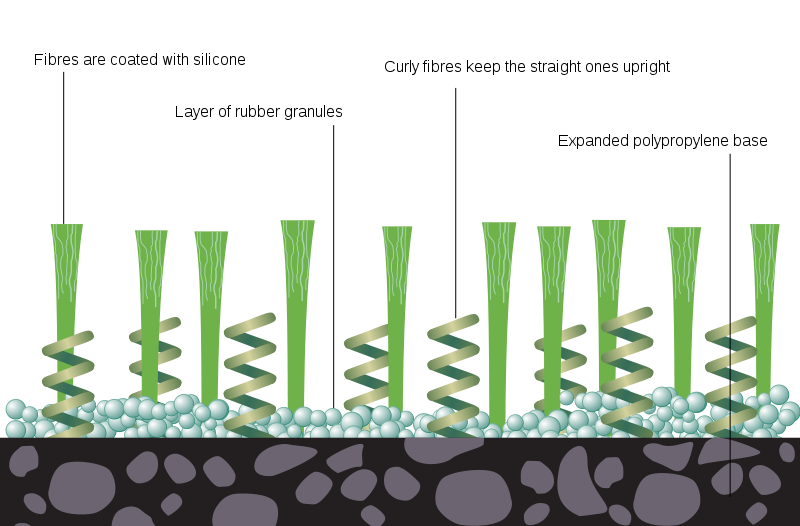Do 3G pitches reduce the risk of concussion?
The past few seasons have seen a rise in the number of artificial 3G pitches, with the Saracens and Newcastle Falcons the early adopters and pioneers in the Aviva Premiership.
Modern artificial turf:

The initial fear with 3G pitches, a reservation I know I certainly held 3 or 4 years ago was how they might increase injury. With years of research and testing, they are now IRB approved and increasingly being adopted across elite, community and school clubs as the initial fears on player welfare and injury appear to have been dispelled.
An area I’m sure many of us (in the Northern Hemisphere particularly) can relate to is arriving at pre-season and seeing the beautifully prepared snooker top style pitches and rubbing your hands together at playing some free flowing and exciting rugby. The idea of knowing I’d still be playing on such a surface between November-March would be fantastic. I speak though as a former centre who used to enjoy the fast paced, free flowing style of rugby… a member of the front row might not hold quite the same excitement.
As mouth-watering a prospect it may appear to some it doesn’t reduce some of the brilliant variations and nuances within the game. It is no coincidence so many England versus Australia Test Matches revolve around the English dominance of the set-piece against the vision and free flowing style of the Australian backs. I find hard to believe the former Leicester Tigers ‘ABC’ club would have developed in such a way on the hard ground at Manly RFC in Sydney.
Style of play aside imagine this for a moment; a 3G artificial pitch able to significantly reduce injury, with lower injury rates than games played on grass. Imagine a surface which could cushion impacts and reduce head injuries and rates of concussion, currently the biggest black mark in rugby’s copybook.
I’ll go a stage further, picture artificial pitches operating on a lease-style basis, which can be laid then rolled up again after a few weeks or months. Would this enable the game to be played during all conditions, and enable all levels to train and play without the requirement for mass initial investment and infrastructure. This would surely have a positive impact on skill-set and dramatically increase involvement.
If we moved to a world where the majority of pitches were artificial I can see the game evolving and players becoming increasingly similar in both size and athleticism. I also worry the game might become more generic and in that regard would definitely lose something. That said, if this is the price we pay for having more people playing the game, with lower rates of injury and a more open and free flowing style is this a problem?
How far can artificial pitch technology go, and is it good for the game? I don’t have the answers, although I’d be very keen to hear from anybody who might.

